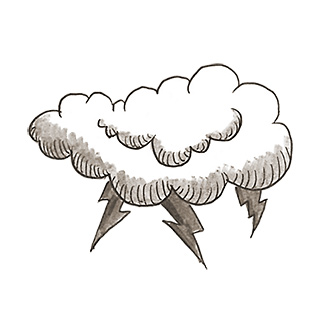
Related Questions
- Is it possible to collect energy from foot traffic?
- Which engine is better at high altitude: diesel or gasoline?
- Can we use heat generated from an air conditioner or refrigerator?
- How does a battery work?
- Is it possible to construct a perpetual motion machine?
- Why can’t fusion energy solve the global energy crisis?
- Can we calculate the efficiency of a natural photosynthesis process?
- How can solar cells become cost-effective enough to be commercially viable?
- Why do the products of a nuclear fission reaction in uranium have three neutrons but not three protons?
- What is a short circuit?
How many wind turbines would it take to power all of New York City?
Several thousand could hypothetically do the job…
By Leda ZimmermanAccording to Paul Sclavounos, professor of mechanical engineering and naval architecture, 4,000 five megawatt turbines could meet New York City’s average annual electric consumption. The city’s five boroughs, plus Westchester, consumed around 60 thousand gigawatt-hours of electricity last year, according to ConEdison. That’s 60 billion kilowatt-hours a year.
This might sound like a lot, but it turns out New York City residents are among the greenest Americans, with households averaging 4,200 kilowatt-hours per year; typical households in less concentrated cities consume two to three times as much power. Still, even with the efficiencies of urban living, when the power needs associated with sweltering summers combine with the needs of bustling industrial and commercial sectors, New York’s utilities struggle to satisfy demand.
Sclavounos has been developing technology for ocean-based wind farms that could really help New York and other coastal cities with growing appetites for electricity. Unlike most offshore installations, which are fixed, bottom-mounted structures near the shore, the wind farms Sclavounos envisions involve a floating array of multi-mega watt turbines located miles from the coastline, and virtually invisible from shore. The absence of any visual impact, believes Sclavounos, lends a critical advantage to his offshore technology since many coastal property owners object to seeing giant windmills in their “backyard.”
The tower for each turbine would stretch 90 meters above the surface of the sea, supporting blades reaching 125 meters in diameter. The whole apparatus would rest on special buoys, one kilometer apart, with strong mooring systems to take big waves. Sub-sea cables dug into trenches would channel electricity generated by each turbine to the electric grid onshore.
Sclavounos calculates that a wind farm sufficient to power all of New York City would spread over 4,000 square kilometers of offshore terrain — 40 by 40 miles, or a land area roughly equivalent to half of Yellowstone National Park. A wind farm of a more typical size, one rated 300 megawatts, say, would occupy a five-by-five mile swath of ocean and could power 1.5% of the city. “That’s a start,” says Sclavounos.
Posted: March 30, 2010